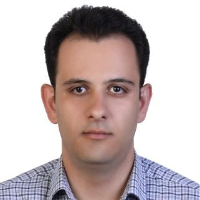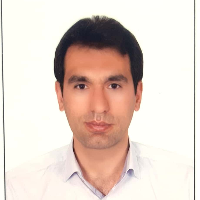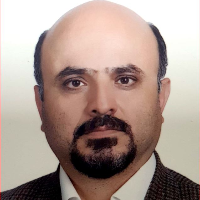Analysis of land use/ cover changes in Ardabil province using landscape metrics
Assessing the process of land use and land cover (LULC) changes leads to a clear understanding of how humans and the environment interact. Landscape metrics can be used as a basis for comparing different scenarios of landscape or recognizing changes and developments in landscape over time. The use of landscape metrics, while saving time, makes it possible to assess the environmental impact of human activities in the shortest time. Population growth in recent decades, the region's high potential for farming, rising expectations and higher demand for income, low employment rates, tourism in the region, the development of communication routes, as well as inappropriate decisions in recent years have led to many changes in Ardabil province. Given the ecological importance of the study area, it seems that the analysis of the relationship between landscape metrics and LULC changes of Ardabil province in the period 1987 to 2015 is a way to quantify the impact of these changes on the landscape.
In this study, the data of Landsat 5 Thematic Mapper (TM) sensor (1987) and Landsat 8 Operational Land Imager (OLI) sensor (2015) were used in a 28-year period to evaluate the trend of LULC changes in Ardabil province. In order to accuracy assessment and geometric correction of LULC maps, 1:25000 topographic maps of the National Cartographic Center of Iran were used. After preparing LULC change maps, LULC metrics were extracted using the FRAGSTATS software. In order to avoid the production of additional information, based on the literature review and expert knowledge, and according to the appropriateness of the criteria with the aim of studying and paying attention to the correlation between there, a set of landscape metrics related to LULC change was extracted. Then, the index of class area (CA), percentage of landscape (PL), number of patches (NP), mean patch size (MPS), edge density (ED), largest patch index (LPI), total edge(TE) and patch density (PD) were calculated and their relationship to LU/LC changes was analyzed by comparative analysis method.
The biggest change in the mean patch size of LULC in the period of 1987 to 2015 (75186 and 1164.354 hectares, respectively) is related to rangelands with a decreasing trend. Population growth in recent years and the resulting to decrease distances between urban and rural areas, low-density construction, transportation network development, and strip or linear growth have led to an increase in the number of man-made patches over time. Moreover, in order to access the living needs, Due to the climatic potential there is an increase in farmlands by changing rangelands throughout the region, especially in the north (Parsabad and Bilesvar counties) and south (Khalkhal county) of Ardabil province, which reduces the percentage of rangelands (From 58.17 to 53.89%). In fact, the process of rangelands change is fragmented, which reduces the mean patch size and, in other words, reduces the stability of the rangelands. On the other hand, man-made land use types have spread in a very heterogeneous and inappropriate way in Ardabil province, which has increased the common border with natural patch and as a result has increased the influence on natural patch (forests and rangelands) and further destroyed them. The increase in class area, largest patch index, total edge, patch density and number of patches of water bodies in the period 1987 to 2015 are due to the increased construction of dams in this period. The increase in requirement and the desire to produce more, and on the other hand the availability of water resources in this period, has changed the rangelands to farmlands (irrigated farming) and as a result, the development of agricultural levels in the region. On the other hand, with the increase of water resources in the province, in the largest patch index of the patches occurred during the study period in dry farming lands. Evaluation of the number of patches showed that the biggest change during the period 1987 to 2015 was related to dry farming class with an increasing trend (2651 patches), which due to human population growth in recent decades, high potential of the region for agriculture and increasing expectations and demand to earn money, this increase indicates the fragmentation and disruption of the landscape, which has resulted in a decrease in forest and rangelands and an increase in farmland land uses. The highest changes in edge density in the period 1987 to 2015 are related to rangelands with an increasing trend (11.78 m/ha) and the lowest change in edge density is related to the forest with an increasing trend (0.66 m/ha). Comparison of edge density showed that the expansion of man-made lands and the increase in agricultural land use (dry and irrigated farming) have increased the edge density of rangeland patches and have been fragmented more than other. The increase in the agriculture level due to the joining of the patches to each other has caused the decrease in the number of patches and the increase in the mean patch size due to the reduction of fragmentation. From the increase in the number of patches in the study period (from 20065 to 23802 patches), it can be concluded that due to human intervention and occupation, the tendency of land appearance in Ardabil province is towards fine-grained structure and the number of man-made artificial and semi-natural patches which has reduced forest and rangelands. The results showed that residential and farmlands (dry and irrigated farming) during the study period had a perfectly aligned change trend, while the reverse trend with forest and rangelands, which can be due to the direct effect and intensity of human presence in determining the distribution pattern for all kinds of LULC.
Due to the uncontrolled growth of residential and farmlands (dry and irrigated farming) in recent years, to prevent further destruction and also to preserve forests and rangelands, it is recommended to perform land use planning based on structural elements and concepts of landscape. The change in the landscape structure has taken in land use types with different degrees, and quantifying these changes using landscape metrics is one of the issues which can help analyze the pattern of spatial changes.
- حق عضویت دریافتی صرف حمایت از نشریات عضو و نگهداری، تکمیل و توسعه مگیران میشود.
- پرداخت حق اشتراک و دانلود مقالات اجازه بازنشر آن در سایر رسانههای چاپی و دیجیتال را به کاربر نمیدهد.





